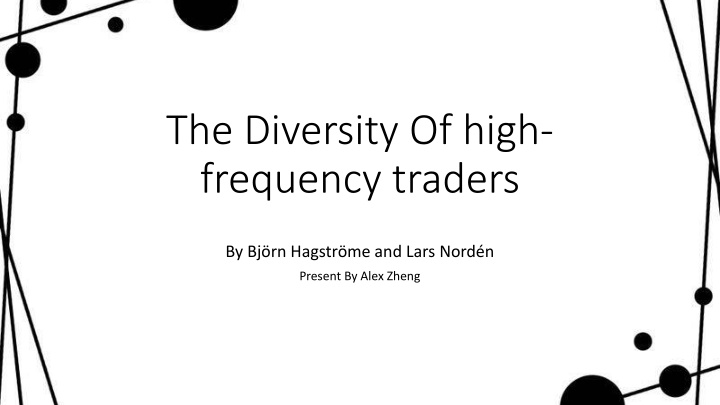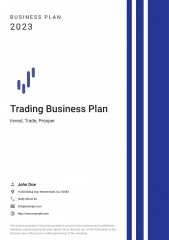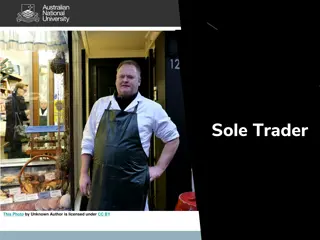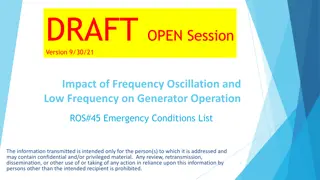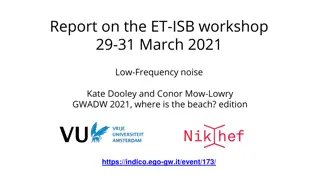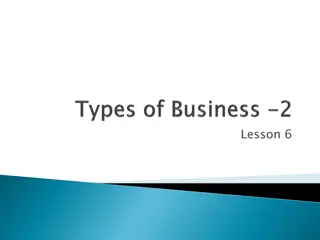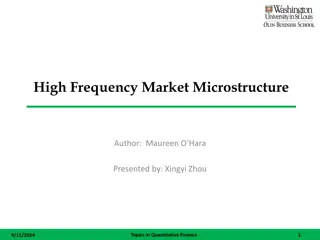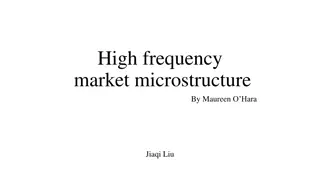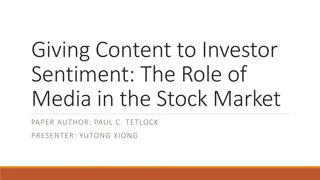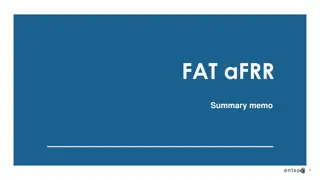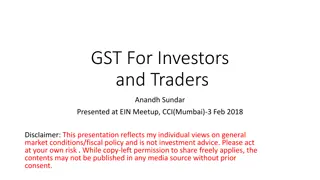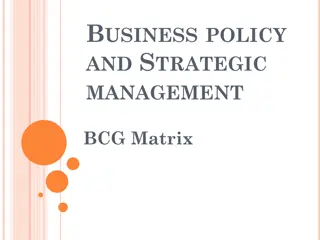The Diversity of High-Frequency Traders and Their Impact on Market Quality
HFTs play a pivotal role in today's financial markets, utilizing advanced algorithms to engage in market-making and opportunistic strategies. This study delves into the various types of HFTs, their market influence, and key contributions to market quality through empirical analysis and data-driven categorization methods. Examined aspects include market-making versus proprietary trading, short-term volatility effects, and causal relationships between HFT activity and market dynamics based on research conducted using data from OMX Stockholm. Insights into HFT characteristics, trade behaviors, and inventory management provide a comprehensive view of this influential trading segment's operations and implications in the trading landscape.
Download Presentation

Please find below an Image/Link to download the presentation.
The content on the website is provided AS IS for your information and personal use only. It may not be sold, licensed, or shared on other websites without obtaining consent from the author.If you encounter any issues during the download, it is possible that the publisher has removed the file from their server.
You are allowed to download the files provided on this website for personal or commercial use, subject to the condition that they are used lawfully. All files are the property of their respective owners.
The content on the website is provided AS IS for your information and personal use only. It may not be sold, licensed, or shared on other websites without obtaining consent from the author.
E N D
Presentation Transcript
The Diversity Of high- frequency traders By Bj rn Hagstr me and Lars Nord n Present By Alex Zheng
Other relevant interesting topic Michael Lewis Flash Boys (2015) Predators and Preys Relationship Example A Exchange has 100 shares of Apple B Exchange has 100 shares of Apple [Signal takes longer to travel to B due to distance] Brokerage firm C tries to buy 150 shares of Apple HFT detects the order of 150 shares at A and race the brokerage to B, buy shares and resell to the brokerage. Liquidity you saw is not what you paid for. Book Example: Takes 2 milliseconds to travel to BATS and 4 milliseconds to travel to Carteret A program that build delay into the signals to make two orders arrive at the same time The order was fulfilled at the listed price https://www.youtube.com/watch?v=wnPl0zvXkjM
Different HFTs Market-making HFTs A service provided to clients to minimize the price impact of trading Opportunistic HFTs A party uses technologically advanced trading algorithms to profit from the trading process itself There were many research papers on the impact of HFTs on market quality but none of these paper has been able to distinguish different strategies in equity markets This paper uses data from NASDAQ-OMX Stockholm and is able to subcategorize HFTs into market-making strategies and opportunistic strategies
Key contributions of this paper Market makers vs Proprietary trading Identity Influence of market-making HFTs on short-term volatility Present empirical setting and data as well as its HFT categorization methodology Event study: Causal effects of HFT activity on volatility
Data and sample collection 30 most traded stocks from OMX Stockholm 30 2 months of data (August 2011 volatile, February 2012 quiet)
Characteristics of high-frequency traders According to SEC, HFTs tend to End the day with close to zero inventories Frequently submit and cancel limit orders Use co-location facilities and highly efficient algorithms, allowing them to minimize different types of latencies Have short holding periods Determine whether such conceptions of HFT behavior apply to our sample of HFT members
Low inventories Due to overnight clearing and capital costs, market makers and opportunistic traders strive to have low overnight positions Since the paper only studies one of the exchanges, it is possible for firms to have high inventories due to the fact that they are utilizing cross-market arbitrage
Frequent submissions and cancellation of limit orders As the algos constantly scan the markets for news about fundamentals, order flows and relative prices, the optimal quotes are subject to continuous change Order-to-trade ratio (q/t): the number of limit order submissions across members and stocks on a given trading day, divided by the number of executions across members and stocks on that day
What we learned form the table? HFTs are quoting more intensely than non-HFTs Low inventory expected as HFTs are well-known for minimizing their overnight exposure Lower latency of HFTs
Within HFT Groups Methodology of Separating within the HFT Groups Randomize the order book snapshot time within each ten-second period to get observations that are uniformly distributed across the ten seconds Market make presence = fraction of snapshots the member has a limit order posted at either side of the inside quotes
Characters of HFT market-maker Make up the majority fraction of HFT trading volume Lower inventory due to a smaller likelihood of arbitrage High liquidity supply (almost double in each sample month)
Impact of volatility on HFT an event study An inherent problem when assessing the influence of HFT on volatility is the difficulty of determining the direction of causality Possible that HFT affects volatility Or, HFT tends to concentrate in the most liquid stocks in each market Important Concept for later study Tick Size: The minimum price change of a stock For NOMX-St Price <= SEK 50, tick size = SEK 0.01 SEK 50 < Price <= SEK 100, tick size = SEK 0.05 Price > SEK 100, tick size = SEK 0.1
Set-up Event: We include an event if the last day before and the first day after the event day on which transaction prices remain in the same tick size category for the whole day Control Group and Comparison Group Selection: Before January 2011 and after January 2011 42 events prior to January 2011 and 47 events after 2011 Low-tick and high-tick regimes Difference-in-difference approach Benchmark: Control the potential time-series variations in HFT activities in the event stock. Benchmarks are the rest of stocks on OMXS 30.
Trading volume market share following tick size changes
Intraday realized stock return volatility following tick size changes
Conclusion Majority of HFT s trading volume and more than 80% of HFT limit order submissions on NOMX-St are associated with market-making strategies Market-makers have higher order-to-trade ratios and lower latency than opportunistic HFTs Market-making HFT activities seem to be beneficial for the overall market quality in the sense that they reduce short-term volatility
My Opinion Although some insights about HFTs, the paper provides relatively limited analysis on opportunistic HFTs Still did not answer the predator-prey relationship brought up by Michael Lewis [Market maker HFT can use market order to buy and front run investors and use limit order to resell for a profit] Minimum tick size as well as batch market mechanism can be considered in the near future for limiting quoting traffic without threatening the advantages of HFT activity
